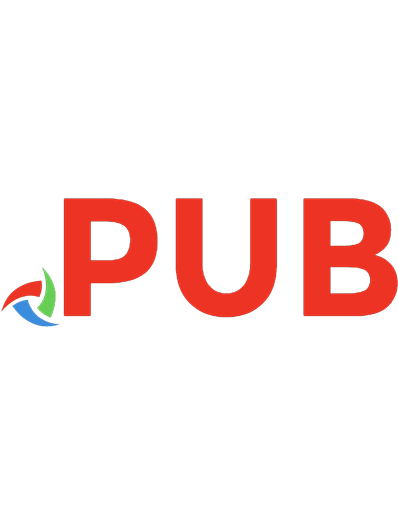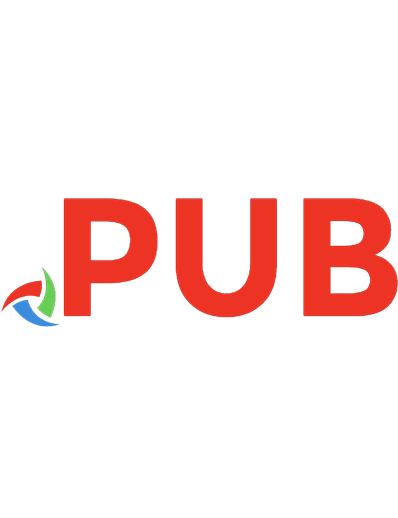Chemotherapy and Immunotherapy in Urologic Oncology: A Guide for the Advanced Practice Provider 303052020X, 9783030520205
This book is designed to familiarize clinical practitioners in systemic therapy options and medical management of urolog
364 76 7MB
English Pages 324 [303] Year 2020

- Author / Uploaded
- Edouard J. Trabulsi
- Costas D. Lallas
- Anne E. Lizardi-Calvaresi
- Categories
- Medicine
Table of contents :
Foreword
Contents
Contributors
Chapter 1: Introduction: Integration of APP into Urologic Oncology Practice
Part I: Prostate Cancer
Chapter 2: Overview and Active Surveillance of Prostate Cancer
Introduction
Epidemiology
Risk Factors
Signs and Symptoms
PSA and Screening
Diagnostic Evaluation
Pathology
Staging
Risk Stratification
Active Surveillance
Bibliography
Chapter 3: Monitoring and Managing Men Following Initial Treatment of Prostate Cancer
Introduction
Monitoring Categories
Monitoring for Biochemical Recurrence
Risk Stratification and Additional Testing
Evidence of Recurrence
Conclusion
References
Chapter 4: Radical Prostatectomy and Survivorship After Radical Prostatectomy
Radical Prostatectomy
Survivorship after Radical Prostatectomy
Urinary Recovery
Sexual Recovery
Works Cited
Chapter 5: Multimodal Treatment Plans in Prostate Cancer
Introduction
Postoperative Radiation Therapy
Genomics
Bibliography
Chapter 6: Radiotherapy for Prostate Cancer
Radiotherapy Techniques
External Beam Radiation Therapy
Brachytherapy
Radiation Therapy Based on Prostate Cancer Staging
Fractionation Schedules and Dosing
Moderate Hypofractionation
Ultrahypofractionated Regimens
Accuracy
Palliative Radiation Therapy
Use of Androgen Deprivation Therapy (ADT) with Radiotherapy
Unfavorable Intermediate-Risk Disease
High-Risk and Very-High-Risk Disease
Possible Side Effects
Unique Toxicities: Recognition, Treatment, and Management
Fatigue
Urinary Toxicities
Gastrointestinal Toxicities
Sexual Dysfunction
Stress Fractures
Methods of Minimizing Adverse Effects
Survivorship after Radiotherapy
Urinary Recovery
Sexual Recovery
Bowel Toxicity
Secondary Malignancies
Other Survivorship Considerations
Assessing for Recurrence
Conclusion
References
Chapter 7: Androgen Deprivation Therapy
Introduction
Mechanism of Action
Regulation of Androgen Production
Agents of Treatment
Removal of Sources of Androgens
Use of LHRH Agonists and GnRH Antagonists
Antiandrogens: Nonsteroidal and Steroidal Antiandrogens
Antiandrogen Withdrawal
Side Effects Management
Healthy Lifestyle
Patient Counseling
Second-Line Hormone Manipulation
Ketoconazole
References
Chapter 8: Second-Generation Androgen-Targeted Agents
Second-Generation Androgen-Targeted Agents
Usage, Indications, and Side Effects of Abiraterone, Enzalutamide, Apalutamide, and Darolutamide
Abiraterone (ZYTIGA™, YONSA™)
Enzalutamide (XTANDI™)
Apalutamide (ERLEADA™)
Darolutamide (NUBEQA™)
Conclusion
References
Chapter 9: Chemotherapy and Prostate Cancer
Introduction
Metastatic Hormone-Sensitive Prostate Cancer (mHSPC)
Metastatic Castration-Resistant Prostate Cancer (mCRPC)
Metastatic Neuroendocrine Carcinoma
Chemotherapy
Docetaxel
Cabazitaxel
Mitoxantrone
Management of Side Effects for Taxanes Derivatives
Conclusion
References
Chapter 10: Radiopharmaceuticals for Prostate Cancer
General Considerations for Radiopharmaceuticals
Strontium-89
Mechanism of Action
Pharmacokinetics
Dosage and Administration
Adverse Reactions and Warnings
Safety Precautions and Patient Education
Background and Clinical Considerations
Samarium-153
Mechanism of Action
Pharmacokinetics
Dosage and Administration
Adverse Effects and Precautions
Patient Education
Background and Clinical Considerations
Radium-223
Mechanism of Action
Pharmacokinetics
Dosing and Administration
Adverse Reactions and Warnings
Safety Precautions and Patient Education
Background and Clinical Considerations
New Directions and Conclusions
References
Chapter 11: Immunotherapy and Novel Agents on the Horizon for the Treatment of Prostate Cancer
Therapeutic Vaccines
Immunomodulatory Drugs/Checkpoint Inhibitors
Treatments that Target CTLA-4 (Cytotoxic T-Lymphocyte-Associated Protein 4) Receptor
Treatments that Target PD-1 (Programmed T-Cell Death 1) or PD-L1
Adverse Effects of Immune Checkpoint Inhibitors
Ongoing Studies of Immune Checkpoint Inhibitors
Administration of Immune Checkpoint Inhibitors
PARP Inhibitors
Combination Therapies
References
Part II: Bladder Cancer
Chapter 12: Bladder Cancer: Overview, Epidemiology, Initial Presentation and Diagnosis
Overview and Epidemiology of Bladder Cancer
Urothelial Carcinoma: Overview
Staging
Histologic Variants of Urothelial Carcinoma
Micropapillary Urothelial Carcinoma
Nested Variant of Urothelial Carcinoma
Clear Cell Variant of Urothelial Carcinoma
Glandular or Adenocarcinoma Differentiation
Plasmacytoid Tumor
Non-urothelial Malignancies
Squamous Cell Carcinoma
Sarcomas
Signet Ring Cell Carcinoma
Small Cell Carcinoma
Risk Factors for Bladder Cancer Development
Geographic Risk Factors
Environmental Risk Factors
Medications/Chemicals Contributing to the Development of Bladder Cancer
Age, Gender, and Genetics as Risk Factors for Bladder Cancer
Mortality
Initial Presentation and Diagnosis
Physical Exam
Diagnostic Testing
Laboratory Data
Diagnosis
Diagnostic Studies
Cystoscopic Evaluation: Final Step for Hematuria Workup
References
Chapter 13: Intravesical Therapy for Non-muscle Invasive Urothelial Carcinoma
Introduction
Intravesical Chemotherapy
Mitomycin
Gemcitabine
Doxorubicin
Epirubicin
Thiotepa
Valrubicin
Immunotherapy
BCG
Interferon
Clinical Uses of Intravesical Therapy
Perioperative Intravesical Therapy
Reducing Recurrence and Progression
Refractory Disease
Complications of Intravesical Therapy
Cystoscopic Follow-Up
References
Chapter 14: Bladder Cancer: Muscle-Invasive Disease, Neoadjuvant Chemotherapy, and Radical Cystectomy
Neoadjuvant Chemotherapy
Neoadjuvant Immunotherapy
Adverse Reactions
Radical Cystectomy
Approaches
Perioperative Teaching
Select Surgical Complications
Urinary Diversions
Incontinent Diversion
Continent Urinary Diversions
Orthotopic Diversion
Nonorthotopic Diversion
Posttreatment Survivorship
Summary
References
Chapter 15: Chemoradiation Bladder Preservation
Indications and Mechanisms
Quality of Life
Algorithms
Survivorship
Future Directions
References
Chapter 16: Metastatic Bladder Cancer and the Use of Cisplatin Chemotherapy
Introduction
Diagnosis/Initial Evaluation
Treatment Selection
Treatment-Related Toxicities
Monitoring Disease Response
References
Chapter 17: Immunotherapy for Metastatic Urothelial Cancer
General Overview of Systemic Immunotherapy for Urothelial Cancer
Treatment of Metastatic Urothelial Cancer with Immunotherapeutic Agents
Overview
First-Line Treatments in Platinum-Ineligible Patients
Atezolizumab
Pembrolizumab
Second-Line Treatments in Patients with Disease Progression Post-platinum
Pembrolizumab
Atezolizumab
Durvalumab
Nivolumab
Avelumab
Summary
References
Chapter 18: Novel and Experimental Strategies in the Treatment of Metastatic Urothelial Carcinoma
Introduction
Recent Advances
Molecular Markers and Genomic and Targeted Therapy
FGFR Inhibitors
ErbB
Antibody-Drug Conjugates
Angiogenesis Inhibitors
Conclusions
Bibliography
Chapter 19: Upper Tract Urothelial Carcinoma
Introduction
Occurrence
Relation to Bladder Cancer
Etiology
Presentation
Diagnosis
Treatment and Follow-Up
References
Part III: Kidney Cancer
Chapter 20: Kidney Cancer and Its Treatment
Chapter Content
References
Chapter 21: Targeted Therapies for Treatment of Metastatic Renal Cell Carcinoma
Introduction
Tyrosine Kinase Inhibitors
Anti-vascular Endothelial Growth Factor (VEGF) Antibodies
Mammalian Target of Rapamycin (mTOR)
Summary of TKIs in Managing Metastatic Renal Cell Carcinoma
Management of Treatment Side Effects
References
Chapter 22: Immune Therapies for Metastatic Kidney Cancer
Background
Interleukin-2
Dose
Adverse Events
Interferon Alfa-2a
Dose
Adverse Events
Immunomodulators and Checkpoint Inhibitors
Mechanism and Biology
Cytotoxic T-lymphocyte Antigen-4
Dose
Toxicity
Programmed Cell Death Protein-1
Dose
Adverse Events
Conclusions
References
Chapter 23: Novel Therapies for Renal Cell Carcinoma
Nivolumab
Ipilimumab
Cabozantinib
Other Novel Agents
Tumor and Biomarkers
Conclusion
References
Part IV: Other Malignancies
Chapter 24: Testicular Cancer
Signs and Symptoms
Epidemiology
Risk Factors
Cryptorchidism
Personal History
Family History
Testicular Dysgenesis
Klinefelter Syndrome
HIV
Ethnicity
In Utero
Summary
Signs and Symptoms
Screening
Early Detection
Pre-diagnosis Workup
Tumor Markers
Diagnosis
Post-diagnosis Workup
Sperm Banking
Tumor Types
Treatment
Pure Seminomas
Nonseminoma and Mixed Tumors
Stromal Tumors
Continued Monitoring: Follow-up
Cost Analysis
Patient Awareness and Education
References
Chapter 25: Penile Cancer
Introduction
Risk Factors and Prevention
Natural History
Staging
Chemotherapy for Penile Cancer
Localized Disease
Locally Advanced Disease
Metastatic Disease
Targeted Therapy
Immunotherapy
Conclusion
References
Index
![Chemotherapy and Immunotherapy in Urologic Oncology: A Guide for the Advanced Practice Provider [1st ed.]
9783030520205, 9783030520212](https://dokumen.pub/img/200x200/chemotherapy-and-immunotherapy-in-urologic-oncology-a-guide-for-the-advanced-practice-provider-1st-ed-9783030520205-9783030520212.jpg)
![Cancer Chemotherapy, Immunotherapy and Biotherapy Principles and Practice [6 ed.]
14966375149](https://dokumen.pub/img/200x200/cancer-chemotherapy-immunotherapy-and-biotherapy-principles-and-practice-6nbsped-14966375149.jpg)
![Cardiovascular Manual for the Advanced Practice Provider: Mastering the Basics [1 ed.]
303135818X, 9783031358180, 9783031358197](https://dokumen.pub/img/200x200/cardiovascular-manual-for-the-advanced-practice-provider-mastering-the-basics-1nbsped-303135818x-9783031358180-9783031358197.jpg)
![Urologic Principles and Practice [2nd Edition]
9783030285999](https://dokumen.pub/img/200x200/urologic-principles-and-practice-2nd-edition-9783030285999.jpg)





